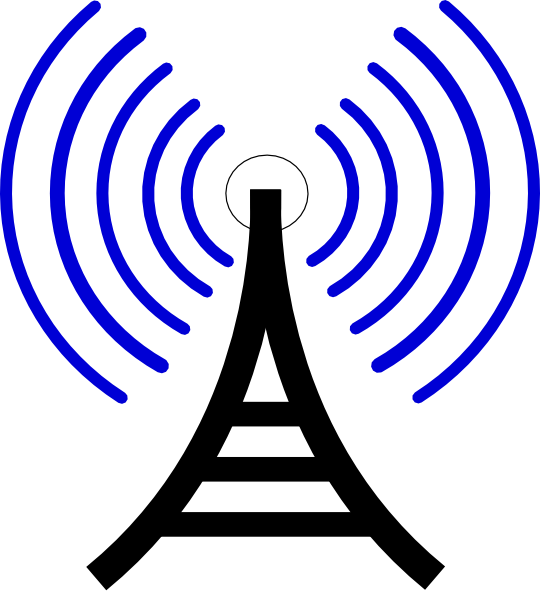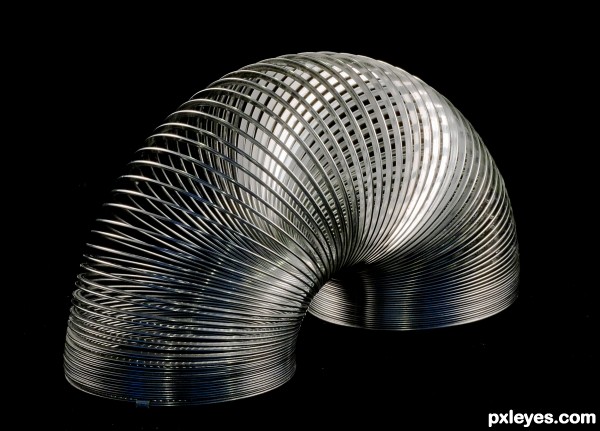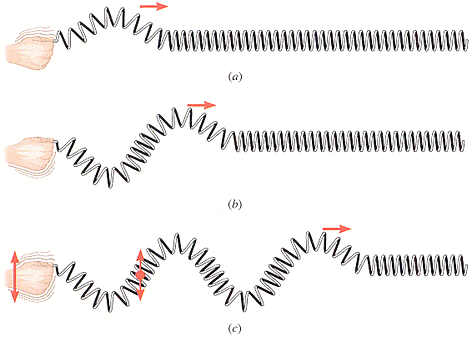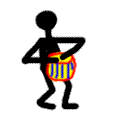Hey, guys. The break is over, and now, it's time to get back to work. Now we're talking about waves. Sound waves, light waves, ocean waves, seismic waves, and even slinky waves! We're gonna be learning about the relationship between waves, matter, and energy, along with a bunch of other stuff. Okay, just a warning: I wasn't very happy with my grade in science. Know what that means? More information! Yippee! Yeah, my friends are gonna kill me.
 So, my friends, let's get started. During every waking sleeping moments in out life, we are attacked by waves. Most waves, however, collide with us, or even pass right through us, without us noticing at all. Light waves, sound waves, and ocean waves are not the same thing. However, they all do the same thing: transfer energy from one place to another.
So, my friends, let's get started. During every waking sleeping moments in out life, we are attacked by waves. Most waves, however, collide with us, or even pass right through us, without us noticing at all. Light waves, sound waves, and ocean waves are not the same thing. However, they all do the same thing: transfer energy from one place to another.
Actually, scientist divide waves into two categories. Mechanical, and electromagnetic. Mechanical waves are waves that need a medium to move through. They use matter to transfer energy. A medium is any kind of matter that is disturbed by energy, which, if you think about it, is quite a lot. Ocean waves, seismic waves, sound waves, and slinky waves are all mechanical waves.
Example: Water waves have a medium of water molecules, and sound waves have a medium of either air, liquid, or solid molecules. Seismic waves travel through the ground, most often after an earthquake. Slinky waves have each loop as their medium.
FUN FACT: One day, in the fifteenth century, Leonardo da Vinci observed a little something about waves: "Like the waves move made in a field of grain by the wind, where we see the waves running across the field while the grain remains in place." This means that while waves move, the medium does not.
ANOTHER FUN FACT: Because sound waves need a medium to move through, and there's no mediums in space, this means that sound can't travel in space. That's why sound waves can't travel from satellites to Earth. So...those Sci-fi movies are lying.
Slinky waves are actually really useful for imagining how mechanical waves look. Imagine that each slinky ring is an individual molecule. If you shake one end of the slinky, you notice that the kinetic energy moves from one slinky ring to the next, just like molecules. Mechanical waves may look like they're moving matter forward with them, but that isn't true. A molecule disturbed by a wave will eventually go back to the position is was in before the wave moved it after it passes on the energy to the molecules next to them, exactly like a slinky ring.
Electromagnetic waves, however, do not need a medium to move through. Examples are radio waves, light waves, x-rays, and microwaves. Electromagnetic waves can travel through empty space, and that's why the light waves from the sun and stars are able to reach the earth, and are visible for mere mortals like ourselves. It's also why radio waves allow us to communicate from those in space, and spacecraft.


While electromagnetic waves and mechanical waves are different in a lot of waves, there's many similar waves they're measured. Now let's talk about transverse and compressional (or longitudinal waves).
More Information on Waves
SuperSara's Blog
Katie's Blog
Logan's Blog
 So, my friends, let's get started. During every waking sleeping moments in out life, we are attacked by waves. Most waves, however, collide with us, or even pass right through us, without us noticing at all. Light waves, sound waves, and ocean waves are not the same thing. However, they all do the same thing: transfer energy from one place to another.
So, my friends, let's get started. During every waking sleeping moments in out life, we are attacked by waves. Most waves, however, collide with us, or even pass right through us, without us noticing at all. Light waves, sound waves, and ocean waves are not the same thing. However, they all do the same thing: transfer energy from one place to another.Actually, scientist divide waves into two categories. Mechanical, and electromagnetic. Mechanical waves are waves that need a medium to move through. They use matter to transfer energy. A medium is any kind of matter that is disturbed by energy, which, if you think about it, is quite a lot. Ocean waves, seismic waves, sound waves, and slinky waves are all mechanical waves.
Example: Water waves have a medium of water molecules, and sound waves have a medium of either air, liquid, or solid molecules. Seismic waves travel through the ground, most often after an earthquake. Slinky waves have each loop as their medium.
FUN FACT: One day, in the fifteenth century, Leonardo da Vinci observed a little something about waves: "Like the waves move made in a field of grain by the wind, where we see the waves running across the field while the grain remains in place." This means that while waves move, the medium does not.
ANOTHER FUN FACT: Because sound waves need a medium to move through, and there's no mediums in space, this means that sound can't travel in space. That's why sound waves can't travel from satellites to Earth. So...those Sci-fi movies are lying.
Slinky waves are actually really useful for imagining how mechanical waves look. Imagine that each slinky ring is an individual molecule. If you shake one end of the slinky, you notice that the kinetic energy moves from one slinky ring to the next, just like molecules. Mechanical waves may look like they're moving matter forward with them, but that isn't true. A molecule disturbed by a wave will eventually go back to the position is was in before the wave moved it after it passes on the energy to the molecules next to them, exactly like a slinky ring.
Electromagnetic waves, however, do not need a medium to move through. Examples are radio waves, light waves, x-rays, and microwaves. Electromagnetic waves can travel through empty space, and that's why the light waves from the sun and stars are able to reach the earth, and are visible for mere mortals like ourselves. It's also why radio waves allow us to communicate from those in space, and spacecraft.


While electromagnetic waves and mechanical waves are different in a lot of waves, there's many similar waves they're measured. Now let's talk about transverse and compressional (or longitudinal waves).
- Transverse waves can be classified into mechanical waves, but electromagnetic waves are a special kind of transverse waves. It moves up and down and back and forth at right angles to the direction of the energy flow. Ocean waves and most of electromagnetic waves are transverse waves.
The crest is the highest point of a transverse waves, and the trough is the lowest point. The distance between the midpoint of the wave and the crest is the amplitude. It's also the measure of much energy the wave is carrying. More energy means a greater amplitude, while less energy has less of an amplitude. The distance a wave travels in one cycle is a wavelength. You can measure the wavelength by finding the distance between two crests or two troughs.
- Compressional waves (or longitudinal waves) are mechanical waves which displace matter forward and backwards in the same direction as the energy of the wave. Vibrations caused by anything like a vocal cord or a drum head or breaking glass will push air molecules together, which forms a series of compressions throughout the air. These air molecules hit your eardrum, making it vibrate, and sending sound signals to your brain.
FUN FACT AGAIN: Light waves have everything to do with color. Without light, there's absolutely no color. Gasapers!
Waves can be measured by their frequency as well. The frequency is the number of waves that pass through a given point in one second. It's measured in hertz (waves per second). Frequency is realted to wavelength, so I figured that even though it's not required to talk about it, I will anyway. A wave with a short wavelength has a high frequency, and a wave with a long wavelength has a low frequency.
Well, that's it for this blog. I hope you learned something...I know I did. I know it's a shorter blog than normal, but after all, it's about quality, not quantity. My classmate's blogs are below, as are some links and a video SuperSara likes. So, thanks for reading my blogs folks! Buh bye!
Information on WavesMore Information on Waves
SuperSara's Blog
Katie's Blog
Logan's Blog














That is really cool awesome blog but my opinion is
ReplyDeleteThat you have cool information about the vibration waves
Okay so Fatima, I loved your blog. It has the perfect amount of information and I loved all of your pictures/animations. Unlike other people I know... *cough cough* ANABEL... I love your long blogs because they actually give a amount of pretty much everything you need in a blog. I also love your way of writing things because you make reading your blog fun and not a chore. Anyways keep the work up! I have always loved your animations you have found. Love ya feebers!
ReplyDeletethat was th best blog ive ever seen in my short little life
ReplyDeleteThanks, guys.
ReplyDelete